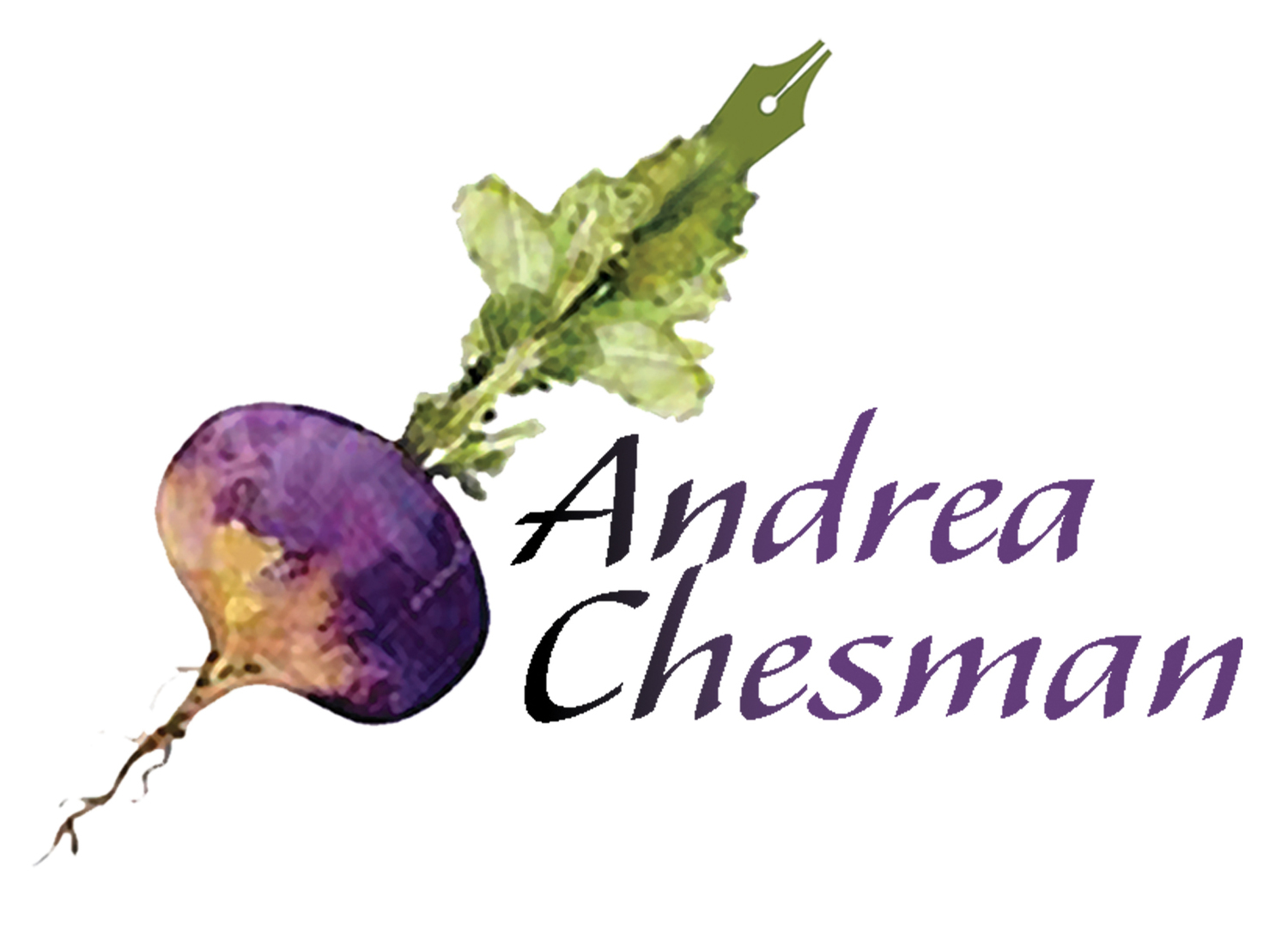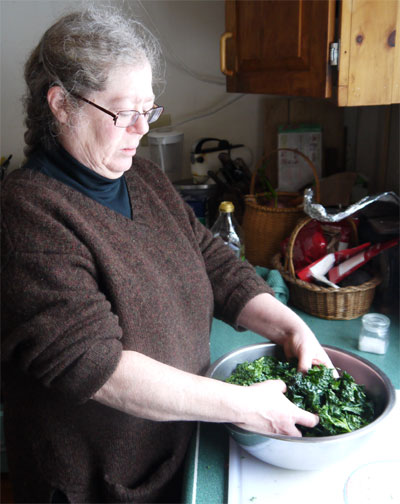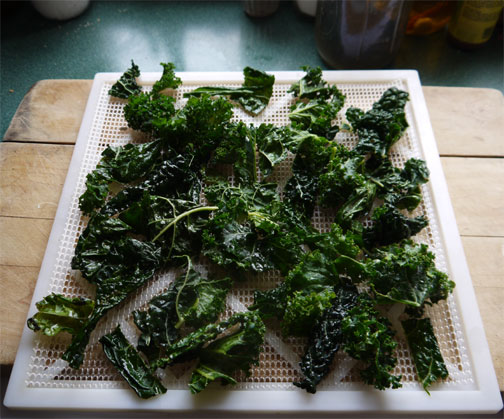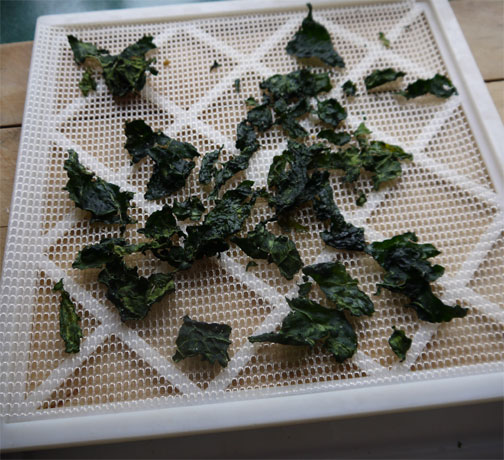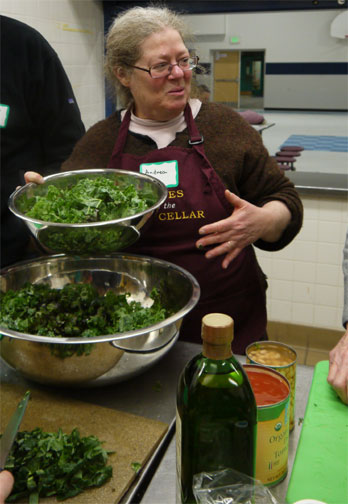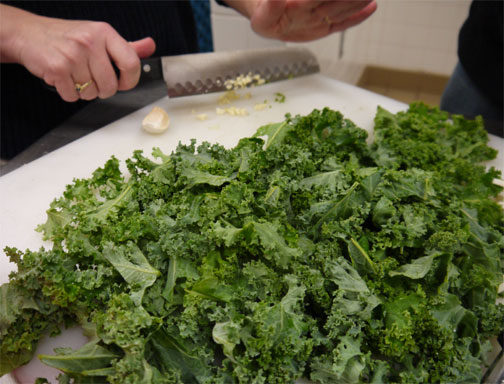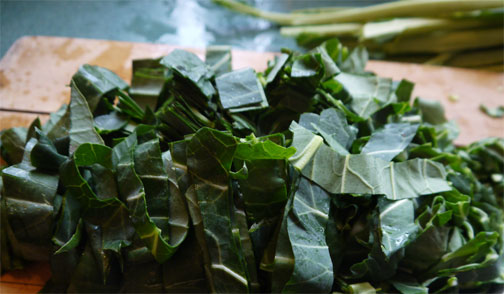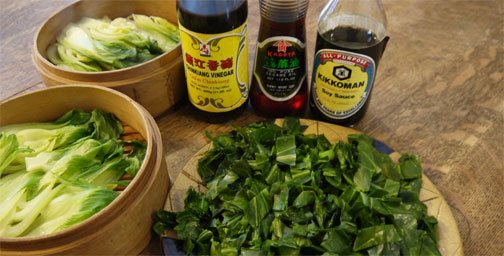I was a slow adapter of the slow cooker. What can a slow cooker do that a Dutch oven and a low oven temperature can’t accomplish? Not much, actually. But the slow cooker can allow you to fix dinner and forget it, walk away, even leave the house. Even garden if it ever stops raining. And the slow cooker won’t heat the whole house – if it ever gets warm enough to matter.
Heat the whole house isn’t a bad idea in this season that is not summer, not yet anyhow. Tonight the low temperature will be 48°, tomorrow it will be 39°, the next day 43°F. We’ve planted the garden, except for the eggplant, which we are still babying in pots. The basil will brown or even die. The beans will lie inert in the soil. The tomatoes are barely hanging in there. Spinach is on hold. The weather is dispiriting.
 Middlebury Farmer's Market.
Middlebury Farmer's Market.
So I will be forgiven for making a slow-cooked, out-of-season Tuscan White Beans and Kale stew. We needed it to fortify our spirits. What inspired the dish was a trip to the Middlebury Farmer’s Market, where Jon Folger of Pine Wood’s Farm of West Pawlet, Vermont, was selling his heritage beef and pork. He had pork neck bones, which I had never cooked with.
“What do you do with neck bones?” I asked. He suggested simmering it in tomato sauce for pasta. “The meat will just melt off the bones.”
Pasta sauce made me think Italian. Italian made me think Tuscan. Tuscan made me think of white beans and kale, a dish my family loves. This version, the simplest one yet, was also the best I've ever had. It really does make a difference to start with dried beans. The meat adds a silken texture and meaty background flavor. Any cut of pork will do, but something bony like neck bones or trotters are best.
Oh, and to make it more seasonal? Substitute spinach for the kale—if your garden grows.
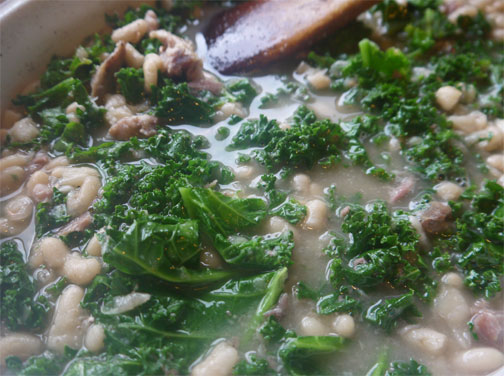 Substitute spinach or another green for the kale if you prefer.
Substitute spinach or another green for the kale if you prefer.
Tuscan White Beans and Kale
Serves 8 to 10
2 cups cannellini beans, soaked overnight and drained
2 to 3 pounds pork neck or trotters
4 cups chicken broth or water
4 cups water
1 whole head garlic, cloves separated and peeled
1 large sprig sage, or 1 teaspoon dried
1 large sprig rosemary, or 1 teaspoon dried
1 teaspoon salt, plus more to taste
1 large bunch kale, stems removed and discarded, leaves chopped
Freshly ground black pepper
Grilled or toasted bread, to serve
1. Combine the beans, pork, broth, water, garlic, sage, rosemary, and 1 teaspoon salt in a slow cooker. Set on high and cook for 6 hours, or until the beans are tender. (If you combine the beans, pork, broth, water, garlic, sage, rosemary, and 1 teaspoon salt in a saucepan and bring to a boil before transferring to the slow cooker, you can knock off 1 to 2 hours of cooking time. Or combine in a large Dutch oven, bring to a boil on the stovetop, then cover and bake at 250°F for 4 to 6 hours.) Taste and adjust the seasoning with more salt, if needed, and pepper.
2. About 15 minutes before serving, reheat, if necessary. Stir in the kale and cook on High in a slow cooker or on top of the stove in a Dutch oven until the kale is wilted and tender, about 10 minutes.
3. Place two slices of bread in each shallow pasta bowl. Ladle the stew on top.
© 2013 Andrea Chesman. All rights reserved.
